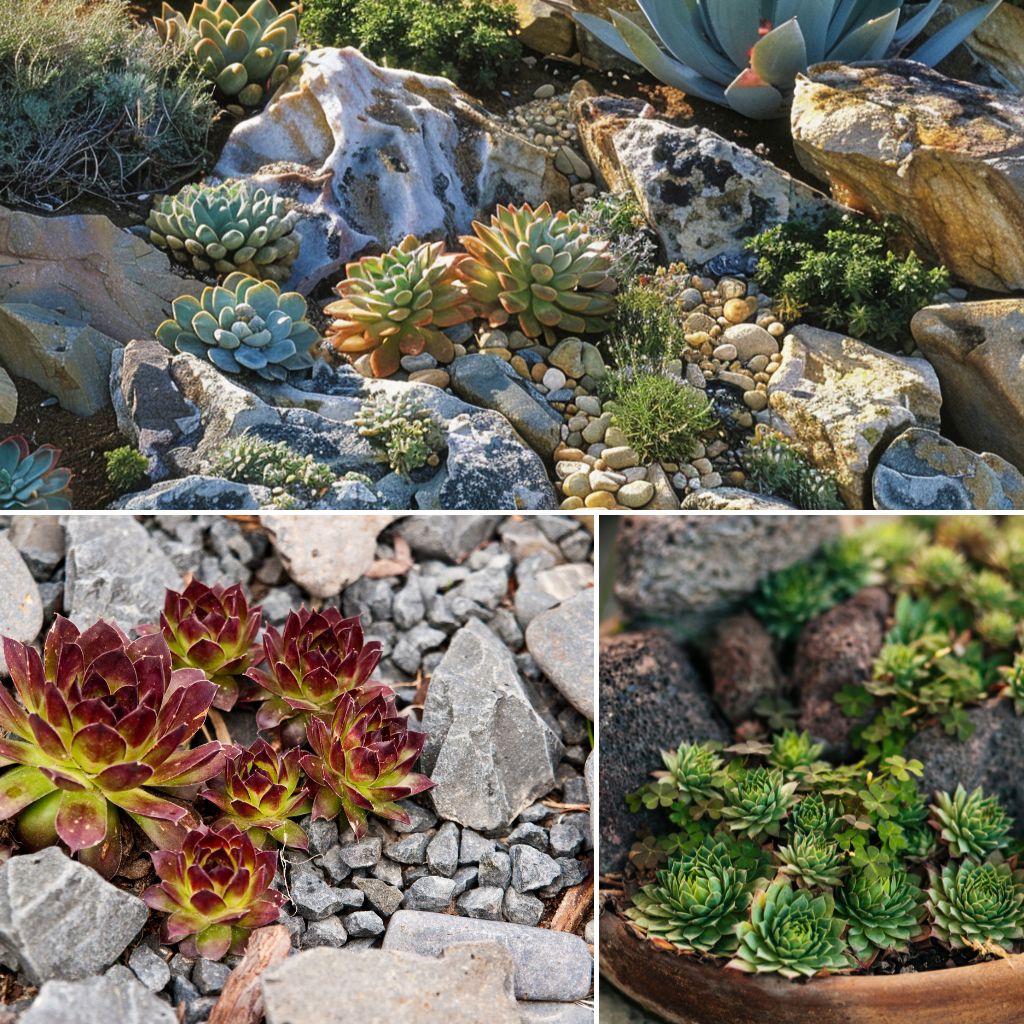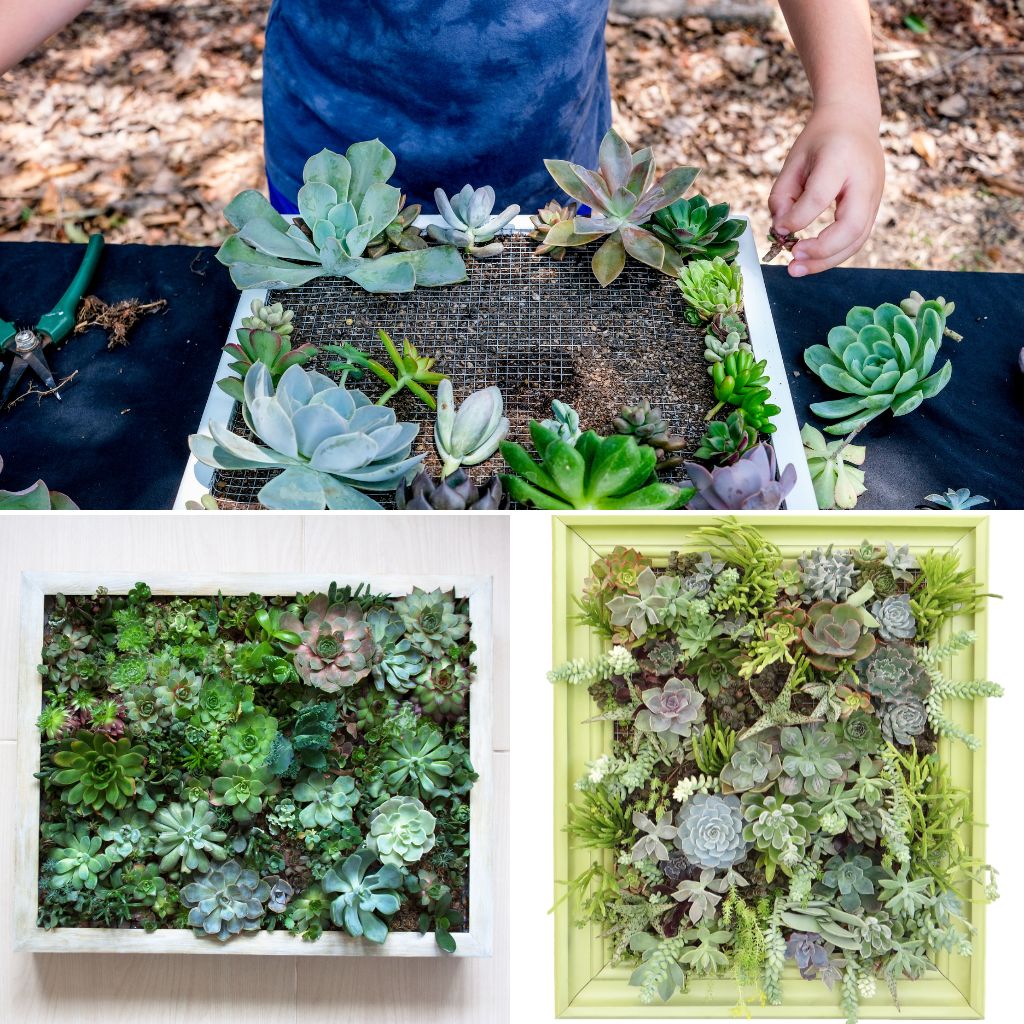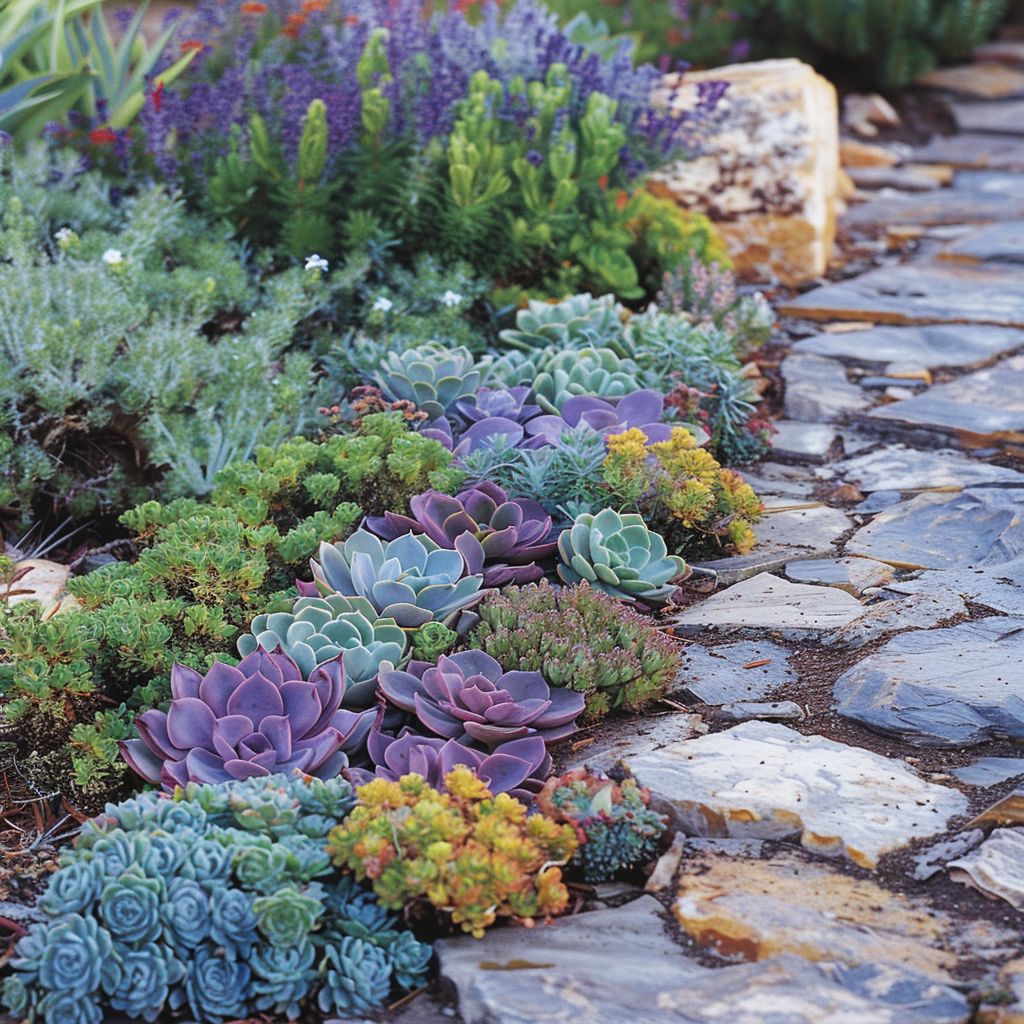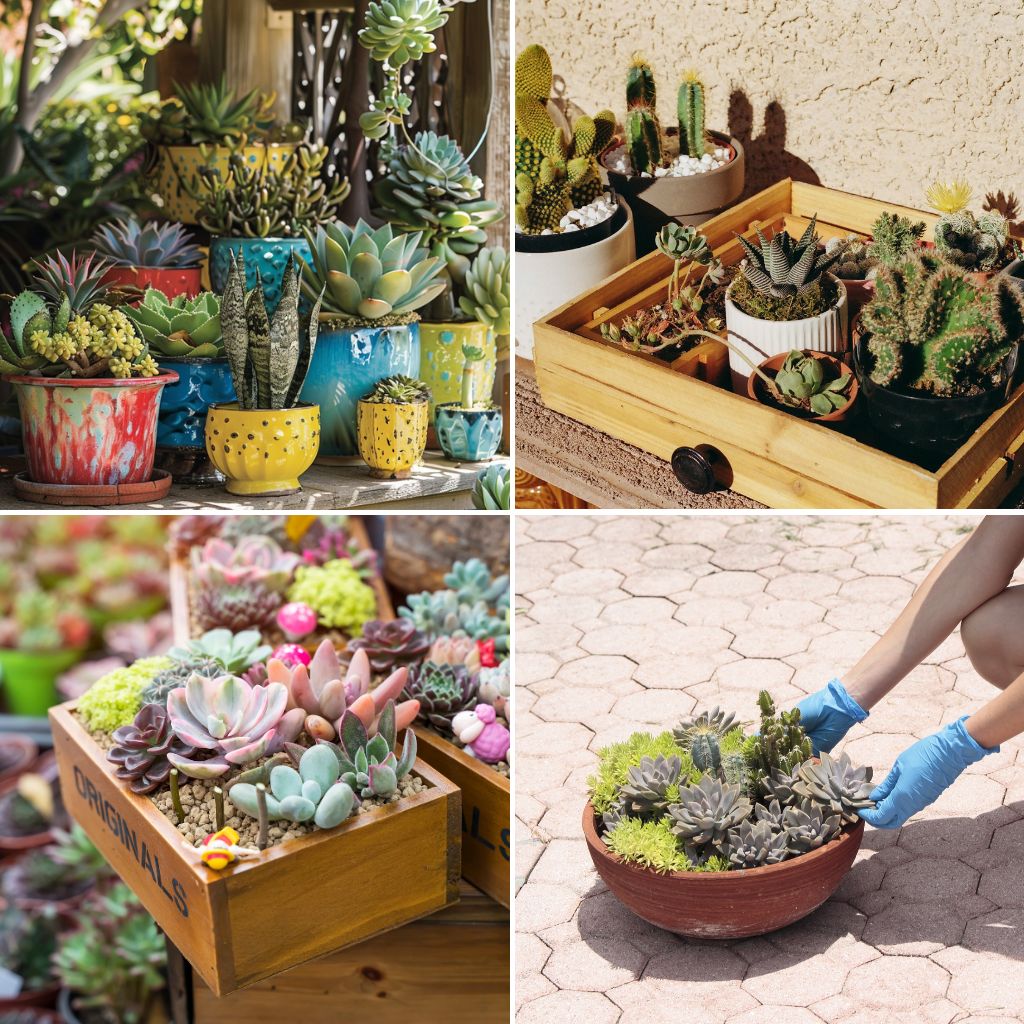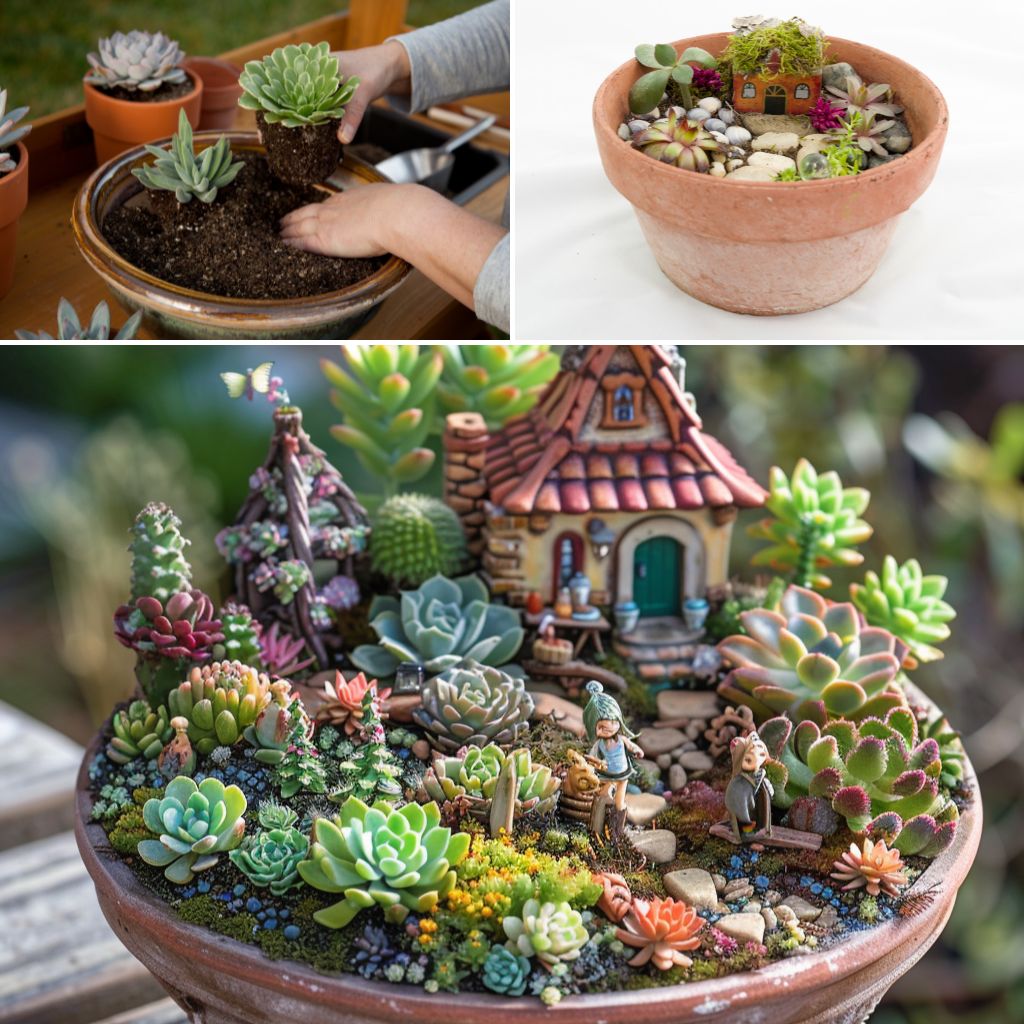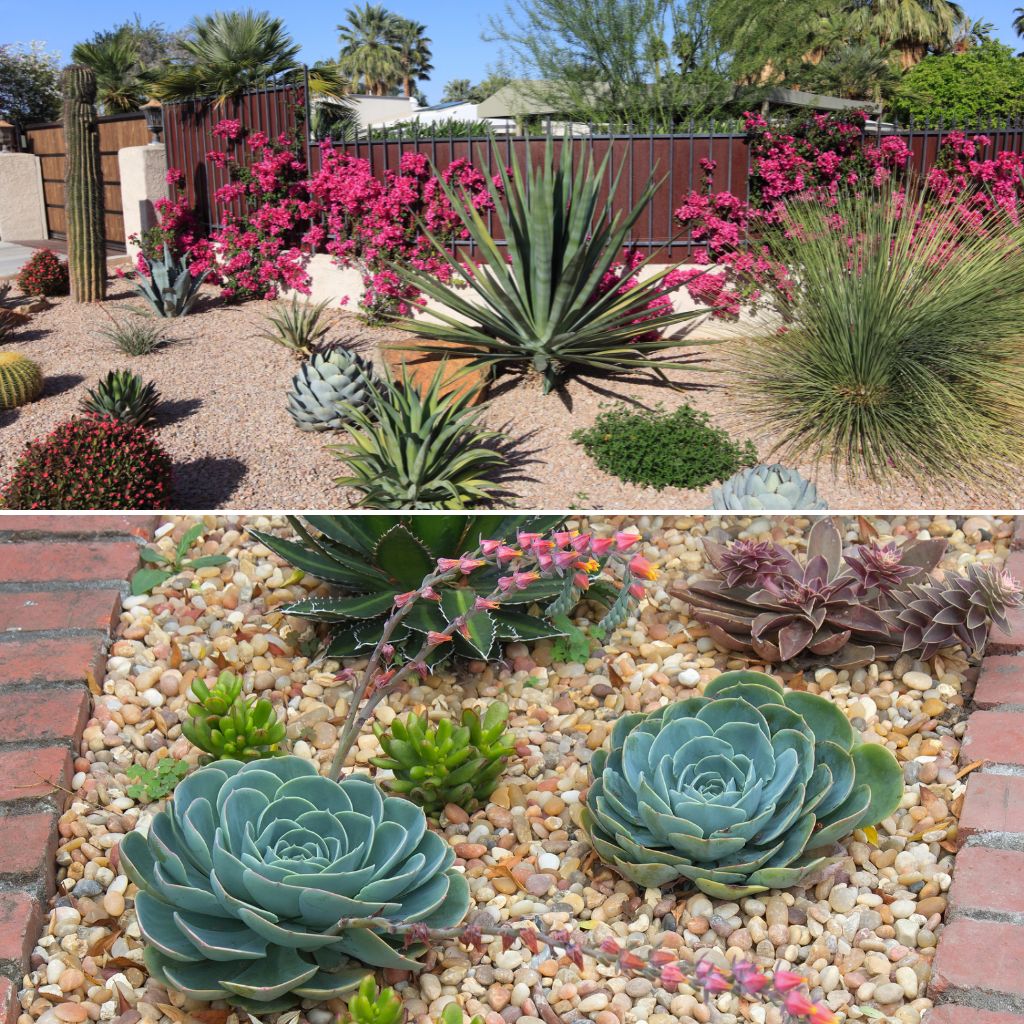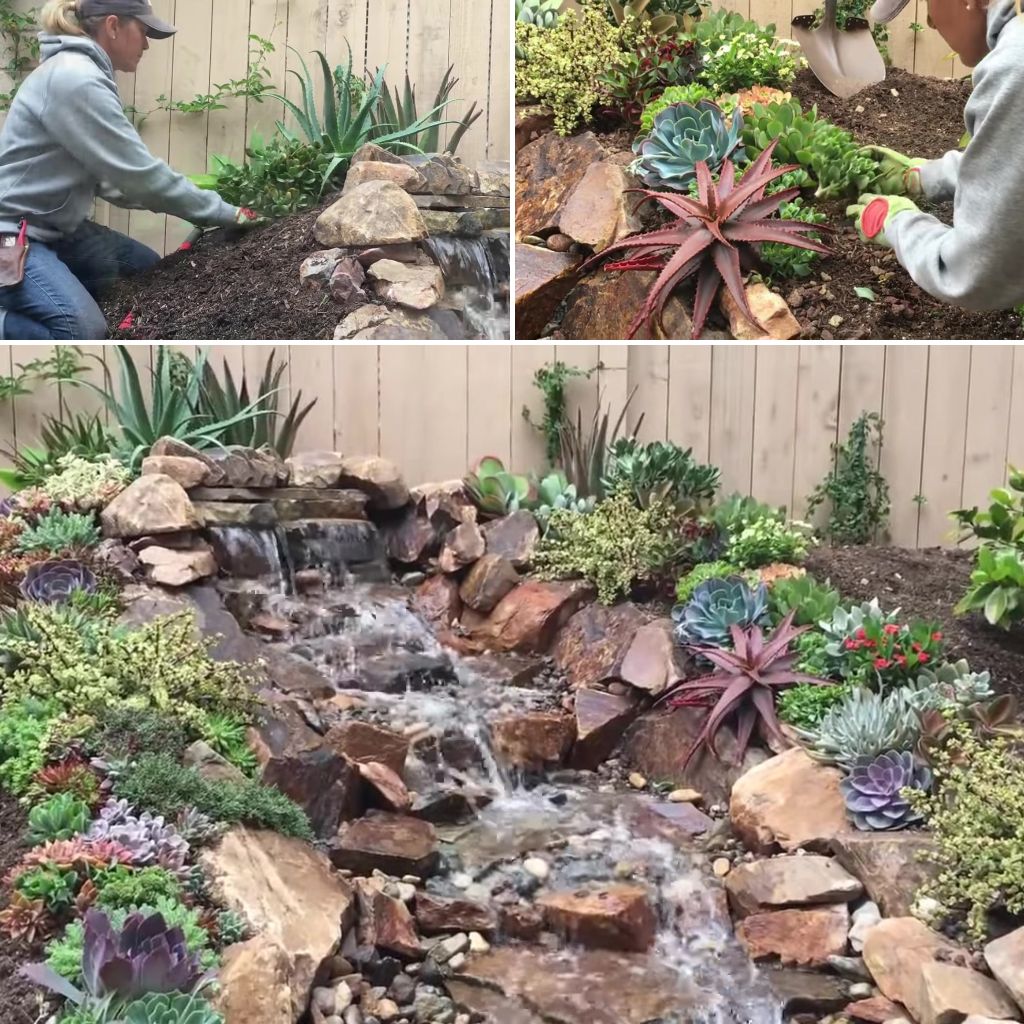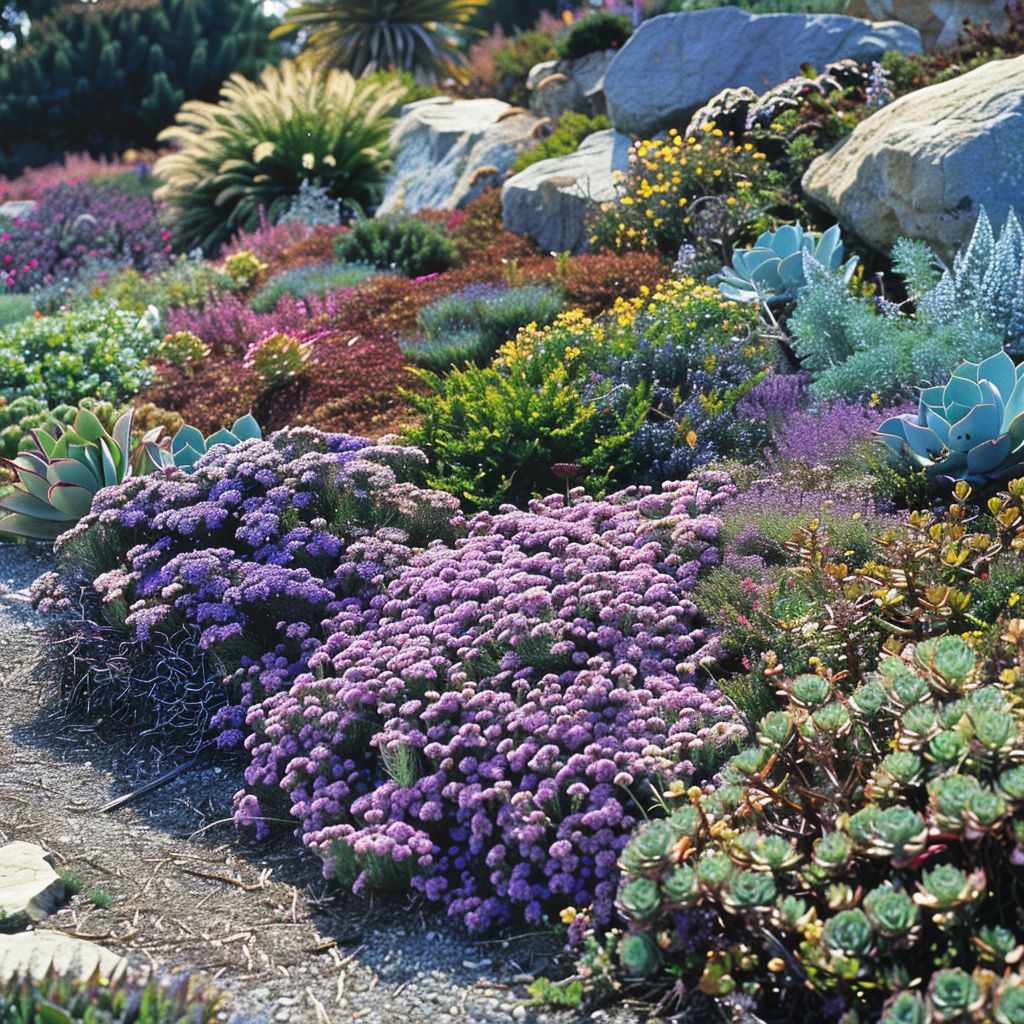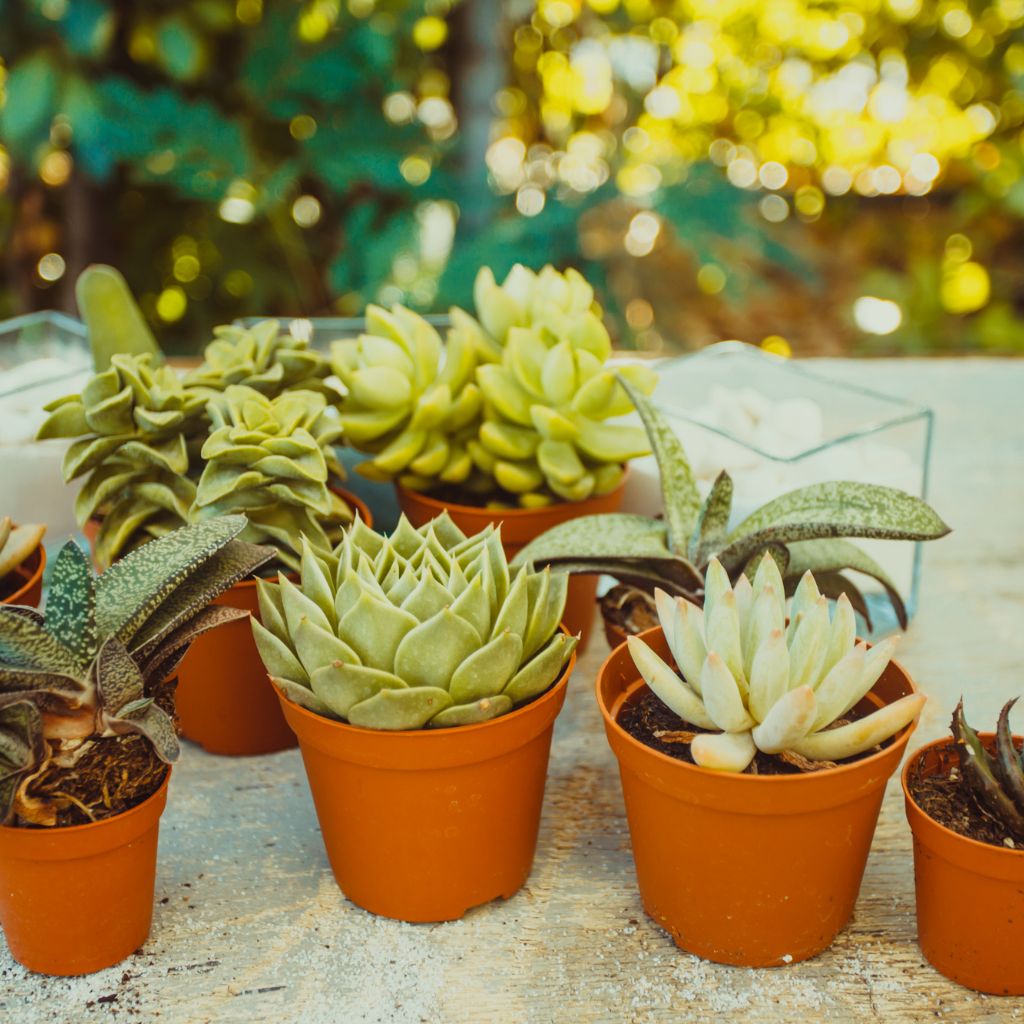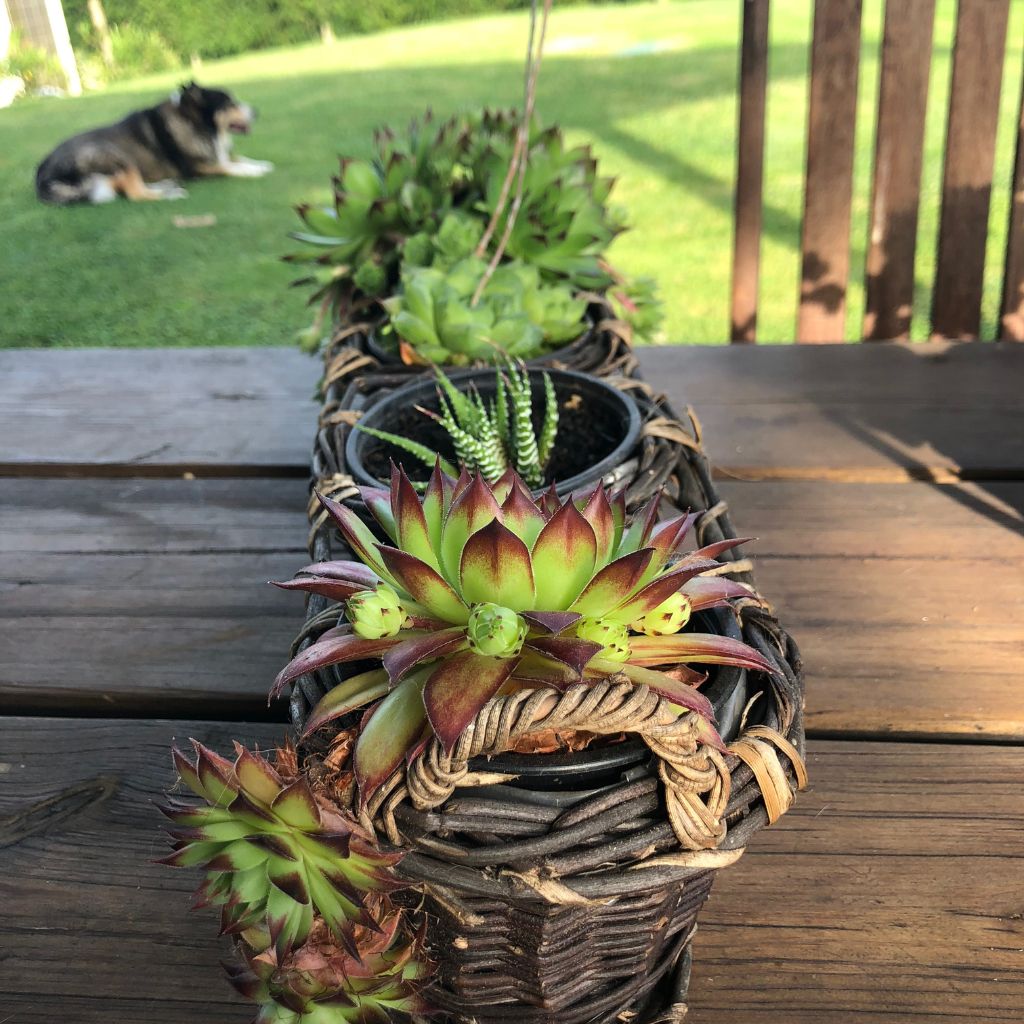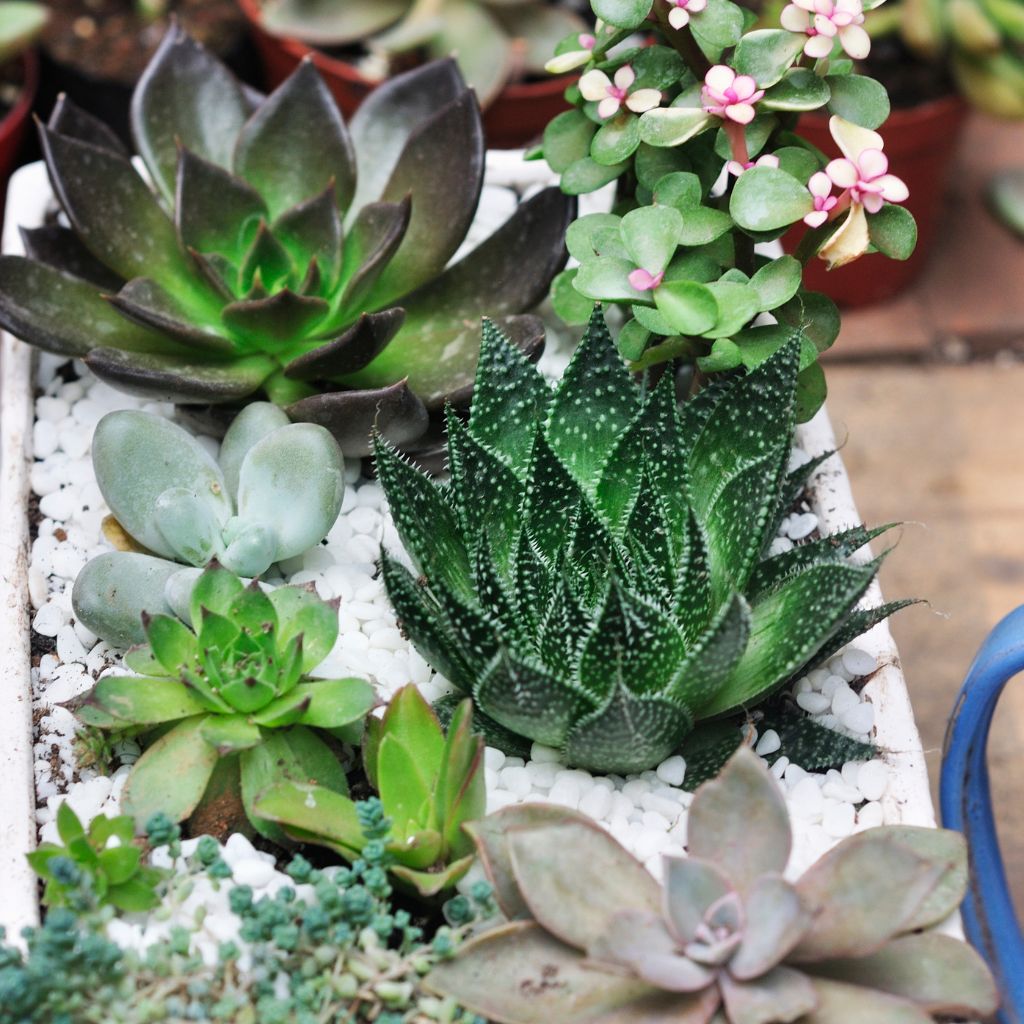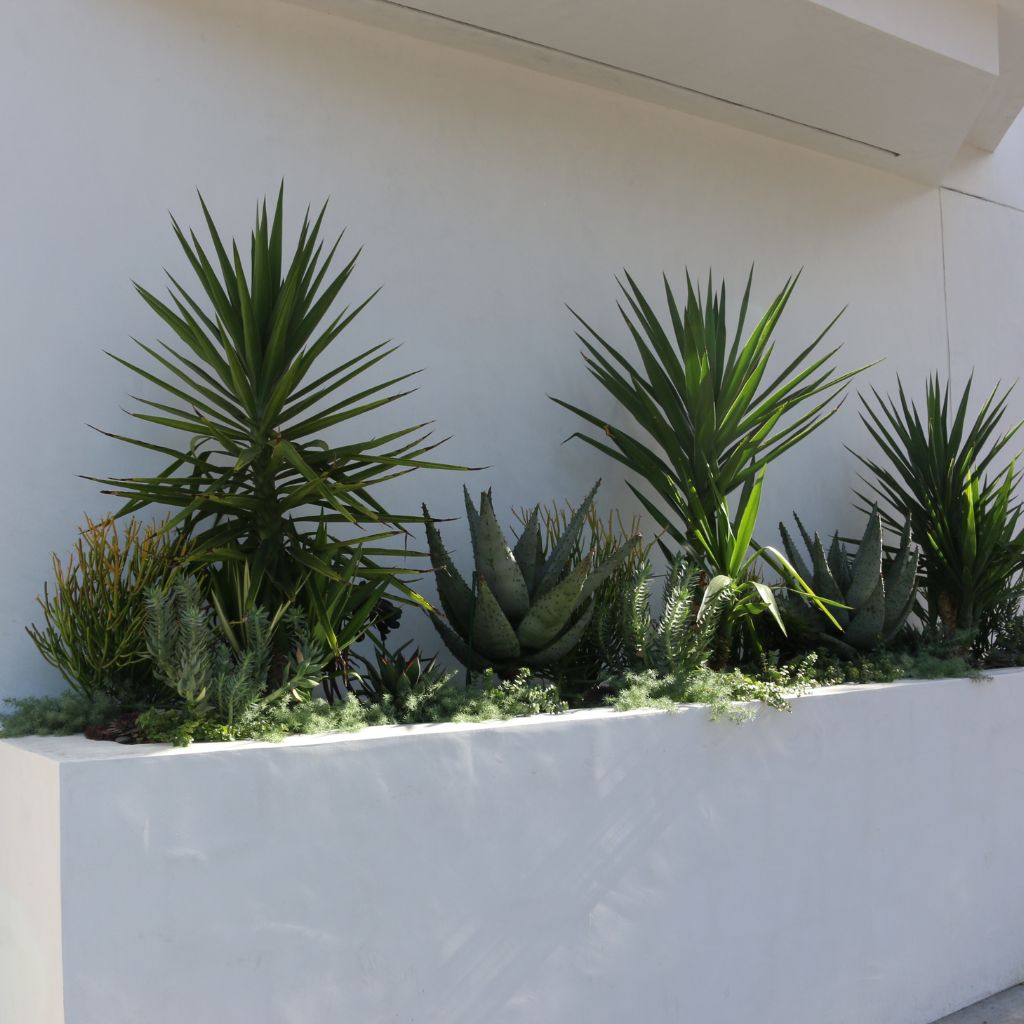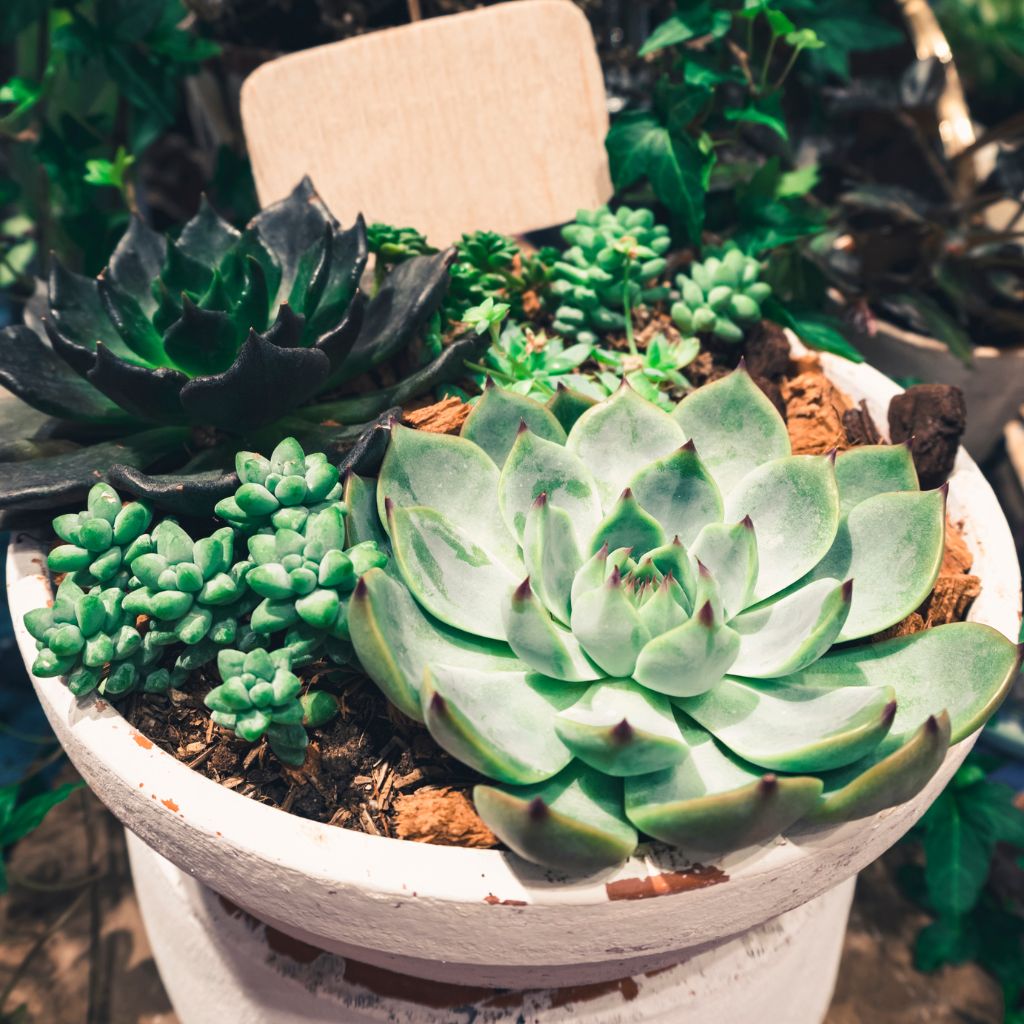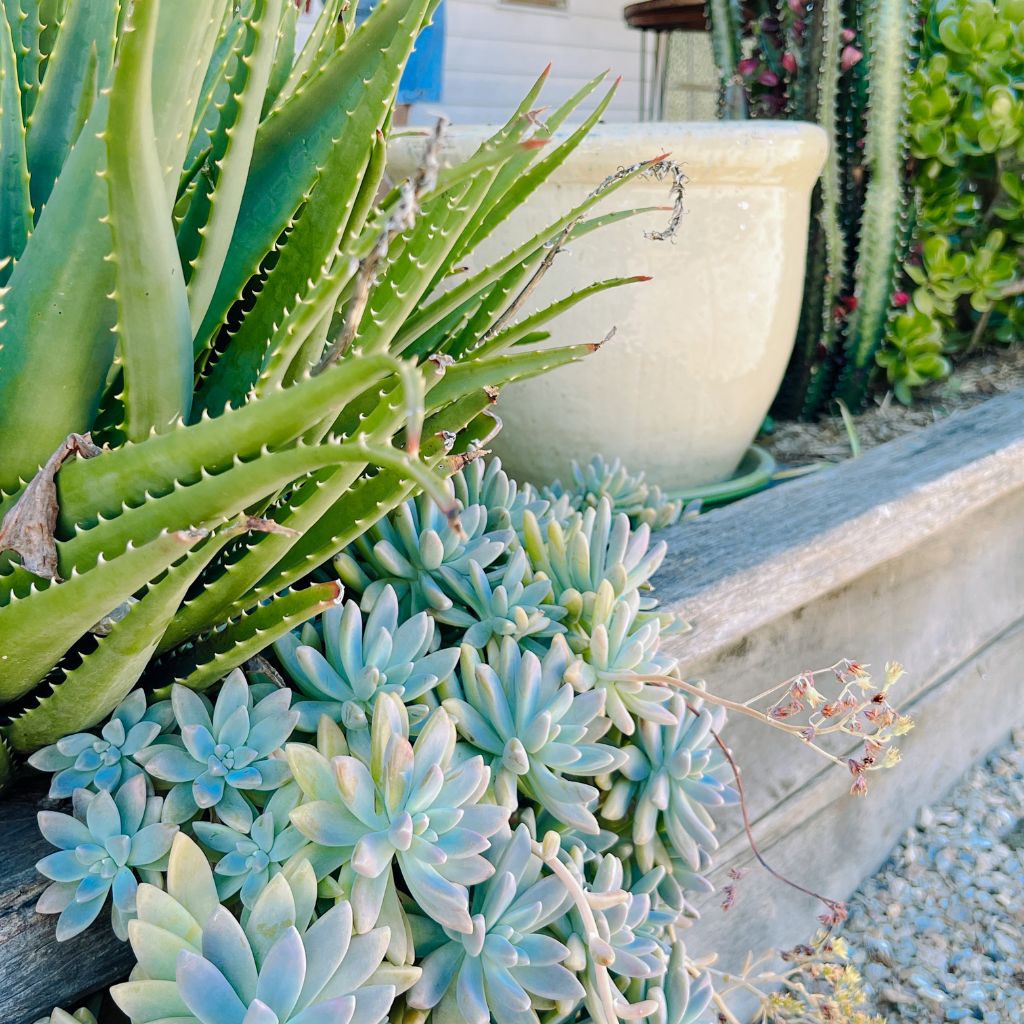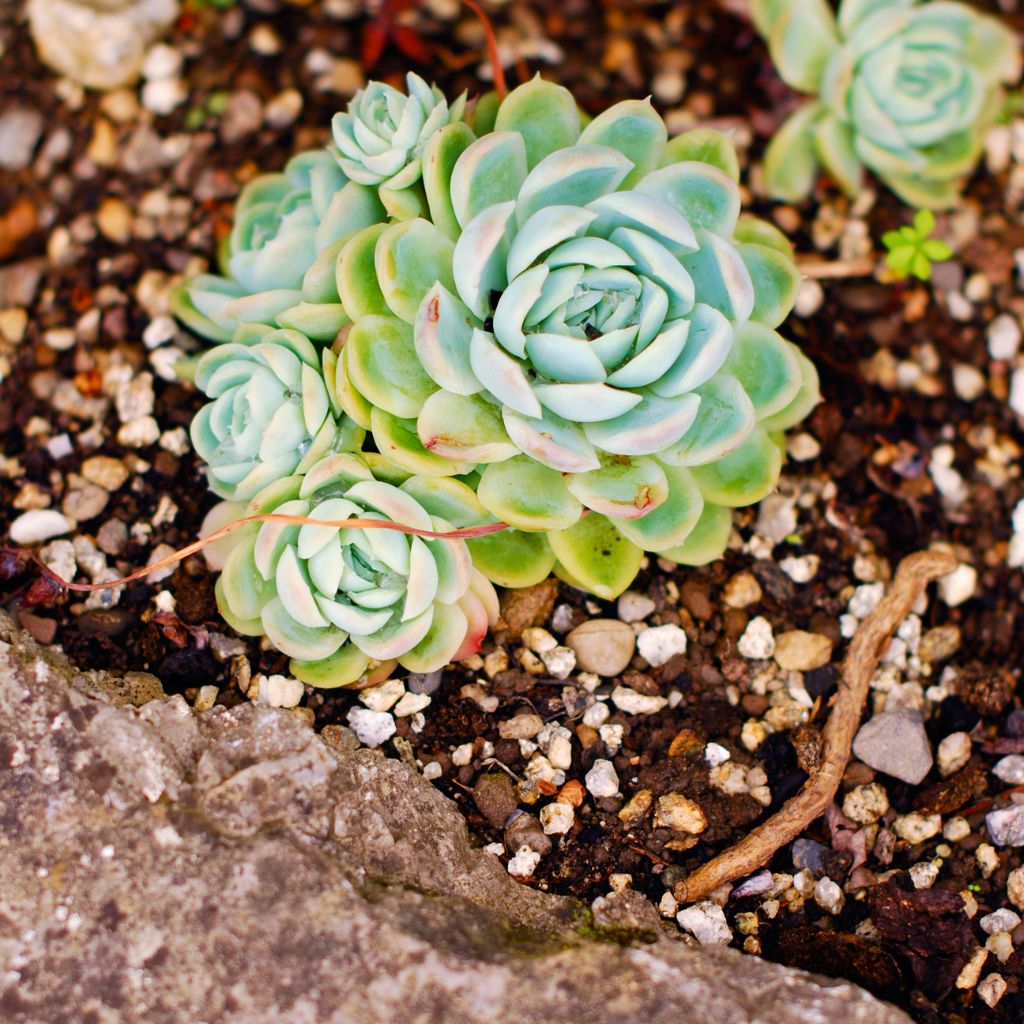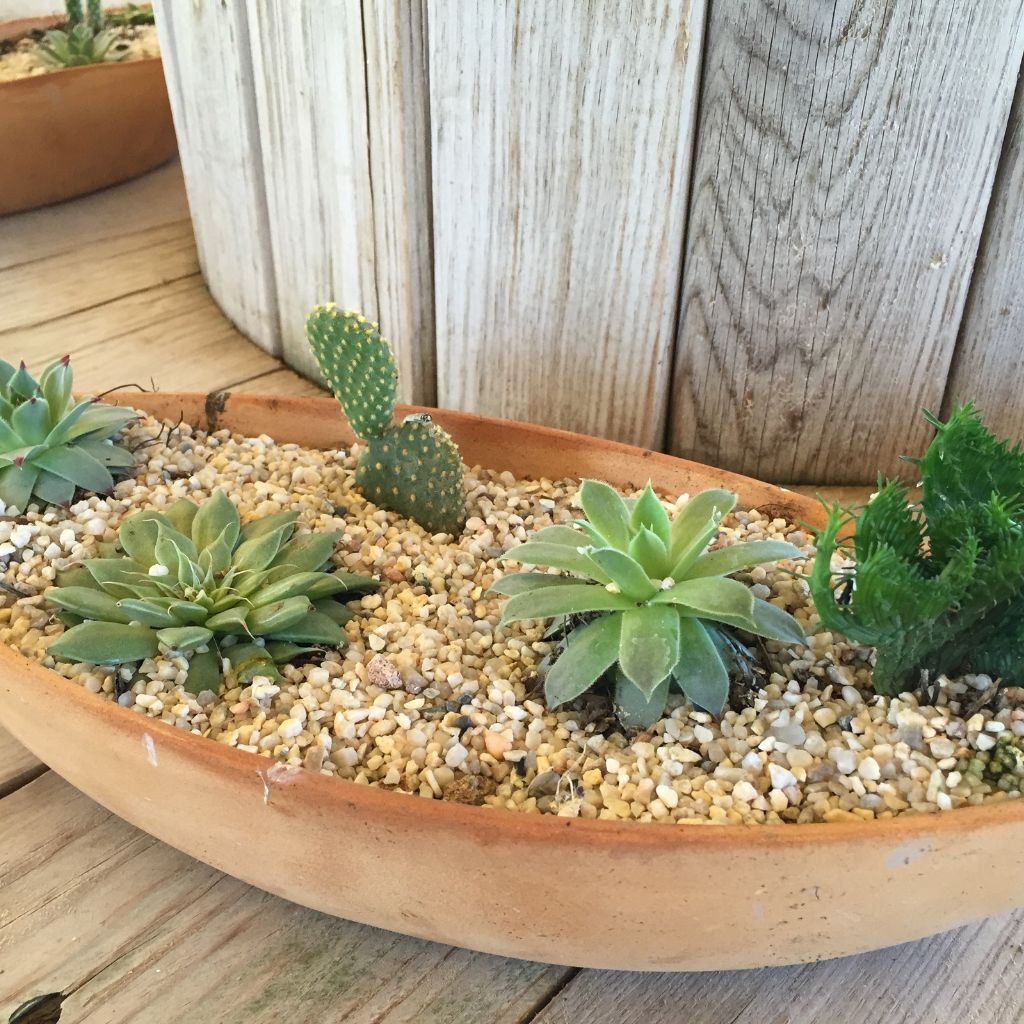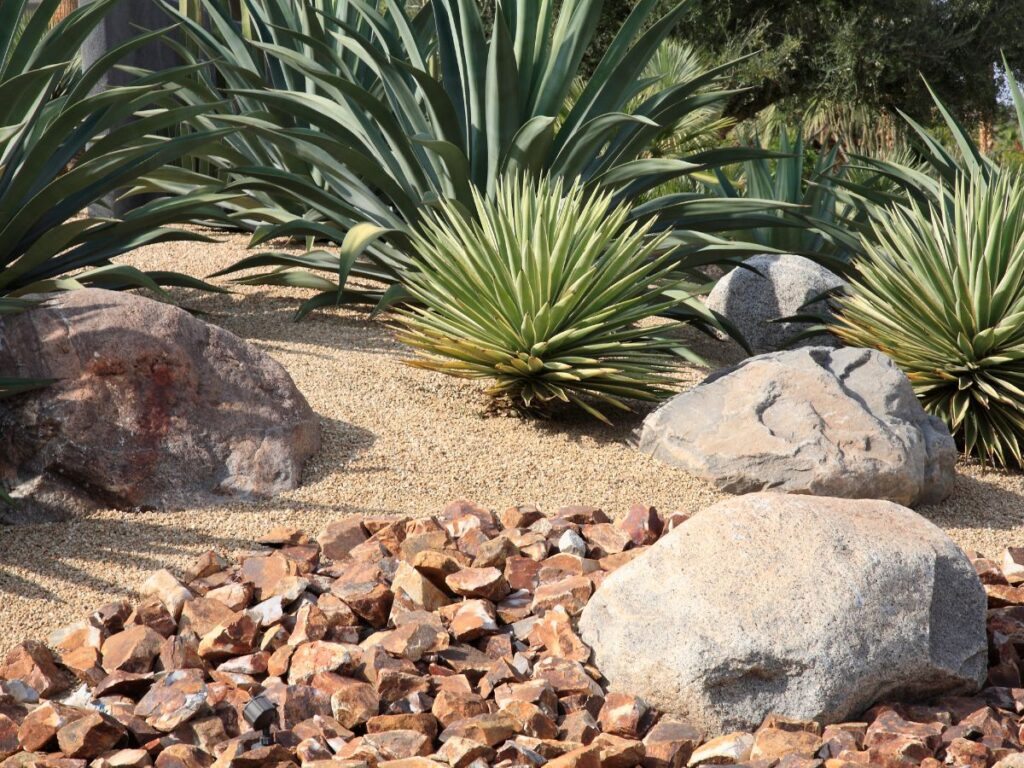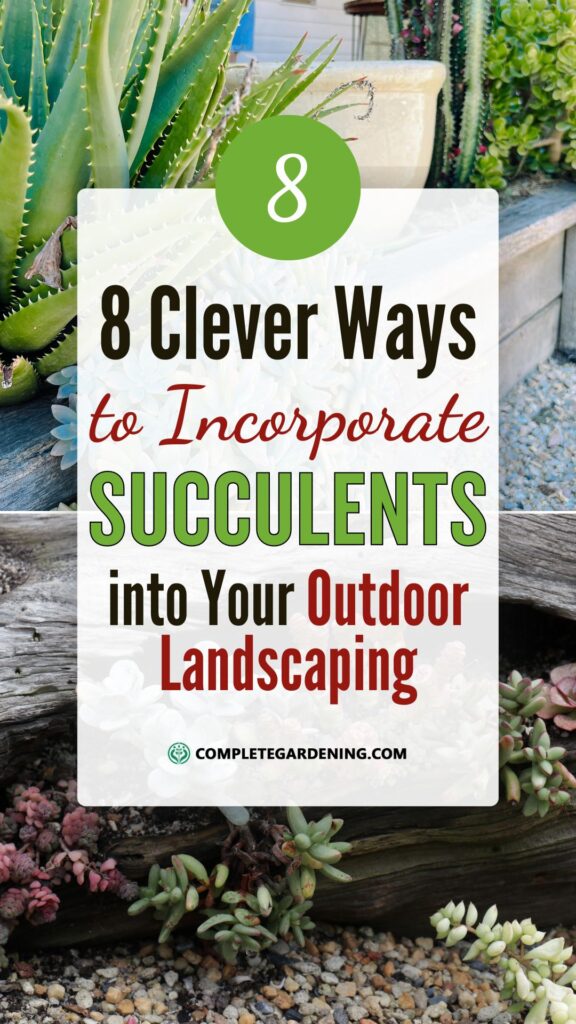Succulents have become a favorite for gardeners looking to add a touch of charm and resilience to their outdoor spaces.
These plants come in a variety of shapes, sizes, and colors, making them a versatile option for any garden. Incorporating succulents into your outdoor landscaping can add a touch of natural beauty and elegance to your space.
Whether you have a large backyard or a small balcony, there are plenty of options to choose from. From creating a succulent garden to using them as a border or focal point, we will provide you with practical tips and ideas to make the most of these beautiful plants.
So, if you’re looking to add some greenery to your outdoor space, keep reading to discover how to incorporate succulents into your landscaping.
1. Create a Succulent Rock Garden
One of the most striking ways to incorporate succulents into your landscape is by creating a rock garden. This setup is not only visually appealing but also highly functional for drought-prone areas.
Choose a sunny spot in your yard and arrange a variety of rocks and gravel to create a naturalistic scene. Then, plant an assortment of succulents like agave, echeveria, and sedum among the rocks.
The contrast between the smooth, fleshy leaves of the succulents and the rugged texture of the rocks creates a stunning visual effect. This type of garden mimics the natural habitat of many succulents, ensuring they thrive with minimal care.
2. Design a Succulent Living Wall
Transform a plain wall into a living piece of art with a succulent living wall. These vertical gardens are perfect for small spaces and add a lush, green focal point to any outdoor area.
To create a succulent wall, use a sturdy frame filled with soil and plant small succulents like hen and chicks, sedum, and string of pearls. Ensure the wall receives plenty of indirect sunlight and water it sparingly.
The succulents will slowly spread, covering the frame and creating a vibrant tapestry of colors and textures.
3. Accent Pathways with Succulents
Enhance the beauty of your garden pathways by lining them with low-growing succulents. Groundcover varieties such as stonecrop (Sedum spp.) and creeping thyme make excellent choices for this purpose.
These plants not only add color and texture along the edges of your path but also help prevent soil erosion.
Their drought-tolerant nature means they’ll flourish without much watering, making them a practical addition to your landscape design.
4. Incorporate Succulents into Containers
Containers offer a flexible way to display succulents, allowing you to move them around as needed.
Opt for an assortment of pots in different shapes, sizes, and colors to create a visually dynamic arrangement. Mix and match various succulent species like jade plant, aloe vera, and zebra plant to add depth and interest.
Place the containers on patios, steps, or even hang them from pergolas for a cascading effect. Containers are particularly useful for climates with harsh winters, as they allow you to bring succulents indoors when temperatures drop.
5. Design a Succulent Fairy Garden
Add a whimsical touch to your landscape with a succulent fairy garden. These miniature gardens can be created in any small space, such as a large planter or a secluded garden corner.
Start by choosing a container or a defined plot of land and fill it with well-draining soil. Plant a variety of small succulents like echeveria, haworthia, and sempervivum, and add miniature fairy houses, tiny furniture, and other whimsical decorations.
The result is a charming and enchanting garden that sparks imagination and delight.
6. Use Succulents as Ground Cover
Replace traditional grass lawns with a succulent ground cover for a low-maintenance, water-saving alternative. Succulents like sedum and ice plant (Delosperma) spread quickly and form dense mats that cover the ground beautifully.
These plants are ideal for sloped areas where grass might struggle to grow. They provide excellent erosion control, and their vibrant colors and textures add visual interest throughout the year.
Plus, succulent ground covers require very little mowing or watering, making them an eco-friendly choice.
7. Create a Succulent Water Feature
Combine the soothing sound of water with the striking appearance of succulents by integrating them into a water feature. A fountain, birdbath, or pond surrounded by succulents creates a serene focal point in your garden.
Choose moisture-tolerant succulents like sempervivum and kalanchoe to plant around the edges. The juxtaposition of water and succulents adds a unique and calming element to your outdoor space, perfect for relaxation and contemplation.
8. Mix Succulents with Traditional Plants
Blend succulents with your existing garden plants to add texture and variety. Succulents pair well with perennials, grasses, and even annuals, creating a diverse and dynamic landscape.
For instance, plant tall grasses or flowering perennials like lavender and coneflowers alongside succulents like agave and echeveria.
The combination of soft, flowing plants with the structured, geometric shapes of succulents creates a balanced and visually appealing garden.
This approach also ensures that different plants can support each other’s growth, with succulents often helping to retain soil moisture for their neighbors.
Final Tips for Your Succulent Landscape
Succulent landscaping is a popular trend that is gaining momentum in the world of outdoor gardening. Succulents are low-maintenance plants that are perfect for those who want to enjoy the beauty of nature without the hassle of constant upkeep.
In this section, we will discuss the basics of succulent landscaping and how you can incorporate these plants into your outdoor space.
Choosing the Right Succulents
When it comes to choosing the right succulents for your landscaping, there are a few things to consider. First, you need to determine the amount of sunlight your outdoor space receives.
Some succulents require full sun, while others thrive in partial shade. Once you know the amount of sunlight your space receives, you can choose the right succulents that will thrive in that environment.
Another factor to consider is the size of the succulent. Some succulents can grow quite large, while others are more compact. If you have limited space, you may want to choose smaller succulents that won’t take up too much room.
Planting Succulents
When planting succulents, it’s important to choose the right soil. Succulents require well-draining soil that won’t hold too much moisture. You can create your own succulent soil mix by combining sand, perlite, and potting soil.
It’s also important to give your succulents enough space to grow. When planting, make sure to space your succulents out so that they have room to spread out and grow.
Caring for Succulents
One of the benefits of succulent landscaping is that these plants are low-maintenance. However, they still require some care to thrive.
Succulents should be watered sparingly, as they can be susceptible to root rot if they receive too much water. In general, you should water your succulents once a week during the growing season, and once every two to three weeks during the dormant season.
Succulents also benefit from occasional fertilization. You can use a balanced liquid fertilizer once a month during the growing season to keep your succulents healthy and vibrant.
Selecting the Right Succulents for Your Climate
When it comes to selecting the right succulents for your outdoor landscaping, it’s important to consider your climate.
Different succulent varieties thrive in different climates, so it’s crucial to choose plants that can withstand the temperature and weather conditions in your area.
One way to determine which succulents will thrive in your climate is to look at the USDA Hardiness Zone Map. This map divides the United States into 13 zones based on average annual minimum temperatures.
By knowing which zone you’re in, you can choose succulents that are best suited for your area.
Another factor to consider is the amount of sunlight your outdoor space receives. Some succulents require full sun, while others prefer partial shade. Make sure to choose succulents that are compatible with the amount of sunlight your outdoor space receives.
It’s also important to consider the amount of rainfall in your area. While succulents are known for their ability to tolerate drought, some varieties require a bit more water than others.
Be sure to choose succulents that can thrive in the amount of rainfall you receive.
Designing Your Succulent Garden Layout
When designing a succulent garden layout, it’s important to consider the size and shape of your outdoor space, as well as the types of succulents you want to incorporate.
Here are some tips to help you create a beautiful and functional succulent garden:
1. Choose a Focal Point
Start by choosing a focal point for your garden, such as a large succulent arrangement or a unique piece of garden decor. This will help guide the layout of your garden and give it a cohesive look.
2. Plan Your Plant Placement
When arranging your succulents, consider their size, shape, and color. Group similar plants together and vary the heights and textures to create visual interest. You can also use containers and raised beds to add dimension to your garden.
3. Use Hardscaping Elements
Incorporating hardscaping elements, such as rocks, gravel, and pavers, can help define the layout of your garden and provide a backdrop for your succulents. Use these elements to create pathways, borders, and seating areas.
4. Consider Sun Exposure
Succulents thrive in sunny, dry conditions, so it’s important to consider the sun exposure of your outdoor space when planning your garden layout.
Place your succulents in areas that receive plenty of sunlight, and provide shade for more delicate plants.
5. Add Decorative Accents
Finally, don’t forget to add decorative accents to your succulent garden, such as garden art, statues, or outdoor lighting. These elements can help tie your garden together and add a personal touch to your outdoor space.
By following these tips and experimenting with different design ideas, you can create a stunning outdoor space filled with the unique beauty and resilience of succulents.

